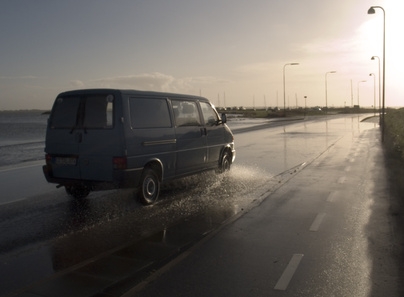
Cargo vans are much larger than typical passenger and minivans, making them ideal for a camper conversion project. The possibilities are nearly endless when planning your camper conversion. Of course, some of the basic considerations are how many people will be occupying the camper, what types of heating and cooking sources you want, what amenities you'll include (such as a TV, toilet and sink), and how much money you want to spend. If you don't already own a van, you'll need to find one, keeping in mind your personal needs and the tasks required of the van, such as mountain travel.
Create a list of items you want to include in the camper once the van is converted. A bed, refrigerator, microwave oven, TV or entertainment center, toilet and sink, carpeting and heating and electricity power supplies all are options.
Ensure that your van is big enough to accommodate your wish list. There are various sizes of cargo vans, with differing lengths, widths, head-room clearance and cubic space.
Draw plans using your items list and the van dimensions.
Remove the cargo-area seats and clean the van thoroughly. Sweep, vacuum and clean all walls and the floor.
Choose a location for the bed (across the back of the driver and passenger seats or width-wise at the back of the van are good options) and anchor a 3/4-inch plywood base to the floor using the many available seat-anchor hardware on the floor.
Construct the bed frame with 2 by 2 lumber. This is best done outside the van (assuming it's possible to fit the finished bed into van afterward). You might want to include space within the frame for storage under the bed.
Attach the bed frame to the plywood base using angle brackets and screws or simply angle drilling screws through the bed frame and into the base.
Build a kitchen table or counter. Attach it to the wall or floor along one side of the van. If you're going to include a propane or kerosene stove, allow for space below the table to accommodate the tank. If you're going to use an electric hot plate, you'll have room under the counter for a small microwave and/or refrigerator. An 800-watt microwave model should serve your needs and use limited power.
Install a sink, either next to the kitchen table or within the counter top. A large stainless sleet bowl--with a sizeable lip--will do the trick. Cut a hole in the counter top and insert the bowl into opening. The lip or rim of the bowl will prevent it from falling through. The bowl can be filled to wash dishes or yourself, then removed to empty the water. You could cut a hole in the bowl bottom and install a drain, consisting of a pipe and receptacle under the counter to catch water.
Install two or three deep-cycle batteries for power needs. Arrange the batteries, which are heavy, around the van to evenly distribute the weight.
Apply any aesthetic appointments such as curtains.